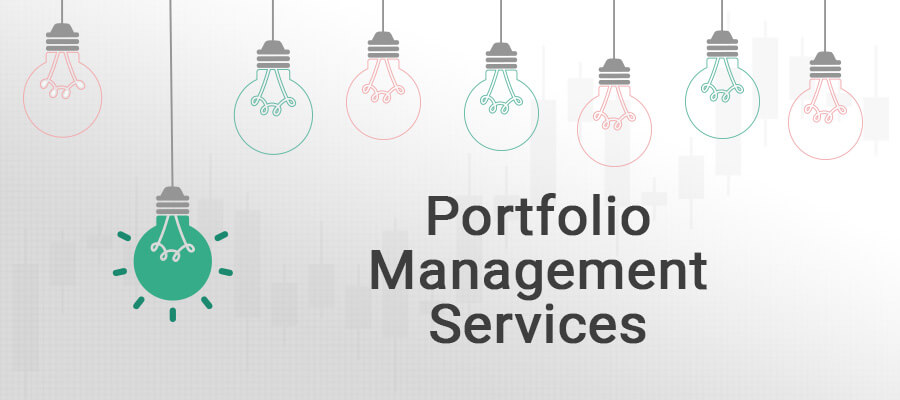
We turn towards the stock market, expecting to make a fortune. Yet a majority of times, most of the investors are victimized between the emotions of greed and fear. The trouble is that many investors tend to over-diversify their portfolio by adding more number of stocks, which is likely to take the investor backwards rather than forward. Investing is an art form. It takes knowledge about the stock market, but more importantly, it requires a strategy and understanding of the businesses and economic cycles.
Portfolio Management Services (PMS), is investment management services offered by the Portfolio Manager. The investment portfolio can be diversified into stocks, fixed income, and other structured products. These services can potentially be structured and tailored to meet specific investment objectives based on the risks, rewards and the goals of the investor as reflected in the Investment Policy Statement (IPS). PMS offers customized equity options, but to avail service of a Portfolio manager, you should have a large sum of money to invest (discussed later in the article).
A portfolio manager has a thorough understanding of the businesses and uses it to improve investor's gains. The manager must have a clarity of the investor's risk and reward expectations to use an appropriate and suitable strategy in order to deliver the high potential returns.
Types of Portfolio Management

- Active Portfolio Management
The active portfolio manager aims to make better returns than the overall markets i.e. to generate Alpha. Higher returns would involve higher than normal risk in the strategies and therefore, the portfolio manager tries to downsize the risk by diversifying its investments into various asset classes, sectors and businesses. The turnover of the assets under management is generally high as compared to Passive style of managing funds. - Passive Portfolio Management
Exactly opposite to the previous type is the Passive style of portfolio management. The portfolio manager generally experiments with the Index funds which has a relatively lower turnover and reasonably decent long term returns. - Discretionary Portfolio Management
A discretionary manager is given full flexibility to make decisions for the investor. While the individual goals, risk appetite and time-frame are taken into consideration, the manager adopts the appropriate strategy which he thinks is the best suiting the investment policy statement. The fees for such managed funds are generally higher because of higher involvement in decision making as well as more efforts by the manager.
Once the cash has been handed to the professional, the investor sits back and trusts that the profits will roll in. - Non-Discretionary Portfolio Management
The non-discretionary manager is more like an advisor than a portfolio manager himself. He advises the investor in which routes are best to take. The risks and rewards are cleared mentioned in the advisory note while the discretion to take action is totally with the investor. Only once the manager has been given the go ahead, the portfolio manager takes the appropriate action on the investor's behalf.
How does a PMS house function?

The investor and the portfolio manager enter into an agreement detailing the investment strategy, goals, risk appetite in the investment policy statement (‘IPS’). The investor can offer either a sum of up to INR 50 lakhs or stocks worth this much.
A portfolio investment with PMS is just equivalent to buying a phone having a screen protected with the tempered glass. Even though the screen is sensitive and prone to breakage with a drop, the tempered glass guards it to reduce its impact on your display. Similarly, the stock market is affected by economic slowdown and market downturns. Active decision making by the PMS protects the investor from such falls marginally. Given the benefits of higher returns, diversified portfolio, risk management and customized, there are a few drawbacks of investing with a PMS house too.
- Higher Capital Investment
The minimum investment is governed by SEBI and it has mandated that one must have a minimum corpus of INR 50 lac to start investing with PMS. This makes it a bit difficult for the investor from lower income profiles. Not every investor shall be able to avail such premium services because of this criteria. This is one of the biggest disadvantages of investing with a PMS house. - Higher Costs
PMS charges asset management fees as a percentage of investment amount. The asset management fees vary between 2-2.5%. For example, if the investment amount is INR 10 lakhs then the asset management fees charged would be around Rs.20,000 to Rs.25,000. Further, very few PMS houses even charge a percentage of profits above a specific hurdle rate separately. These are the two key costs of this service. Along with this, with every transaction, the brokerage you incur is another cost for you. Let's say if the broker charges a 0.25% of brokerage per transaction, then with the turnover of 4 times, the investor has to incur a brokerage of 2%. This entire package becomes costly with all these costs and directly impacts the overall portfolio returns. - No Performance Guarantee
As mentioned earlier, the PMS houses are a party to profits but not to losses. It is a well understood phenomenon that the risk involved in investing into financial markets is higher and there is no guarantee for a superior performance.
While the main aim of PMS is to offer higher returns, We at StockBasket, have come up with the solution for this. At StockBasket, the stocks are identified and selected in the basket by experts. These expert curated stocks are offered to our clients.
StockBasket offers the investors a basket of well researched Stocks which helps them in selecting different model portfolios. The model portfolios are categorized by financial goals, time horizon, Risk Appetite and theme based etc. (shall be discussed later in the article). Investors can then choose their basket depending upon their long term goals and financial need. These models reiterate the manner in which the amount is going to be invested.
An illustrative list of baskets and their basis are tabulated as under for ready reference.
| Basis | Option I | Option II |
|---|---|---|
| Financial goals | International Vacation Basket | Retirement Basket |
| Themes | Bet on India’s Millennials | Health and wellness basket |
| Time Horizon | 5 year low/high risk basket | 10 year 4x target basket |
Why StockBasket over PMS?
- Investment Size
A minimum size of investment in any PMS is INR 50 lakhs as regulated by SEBI. At StockBasket, the investor can select the basket and invest at an ordinary investment of INR 3,500. The selection of the basket shall consider the return expectations of the client, risk profile, constraints as well as limitations. - Model Portfolio – Goals based basket
While many PMS and Mutual fund houses offer standardized portfolios, StockBasket allows the investor to select the basket tailored to his requirements and constraints. - Fee Structure
As discussed earlier, most PMS charge a 2% annual fee and get 20% profit beyond a hurdle rate. The hurdle rate determines the level of profit beyond which profit-sharing shall take place. For example, a 15% rate means the PMS provider will get 20% profit above 15%. StockBasket merely charges a fixed research subscription fee with a 5 year refund guarantee. If investors do not make money at the end of a 5 year investment period, the entire subscription fee collected over a 5 year period shall be refunded to the customer.
Once the decision to invest in the financial market is finalized, one may need to do some research and analyze the businesses. It usually is not enough to just deploy the funds into the market in a haphazard manner — if the investor invests the money smartly and strategically using a methodology that works, the investor could minimize the risk and maybe even earn higher returns.






